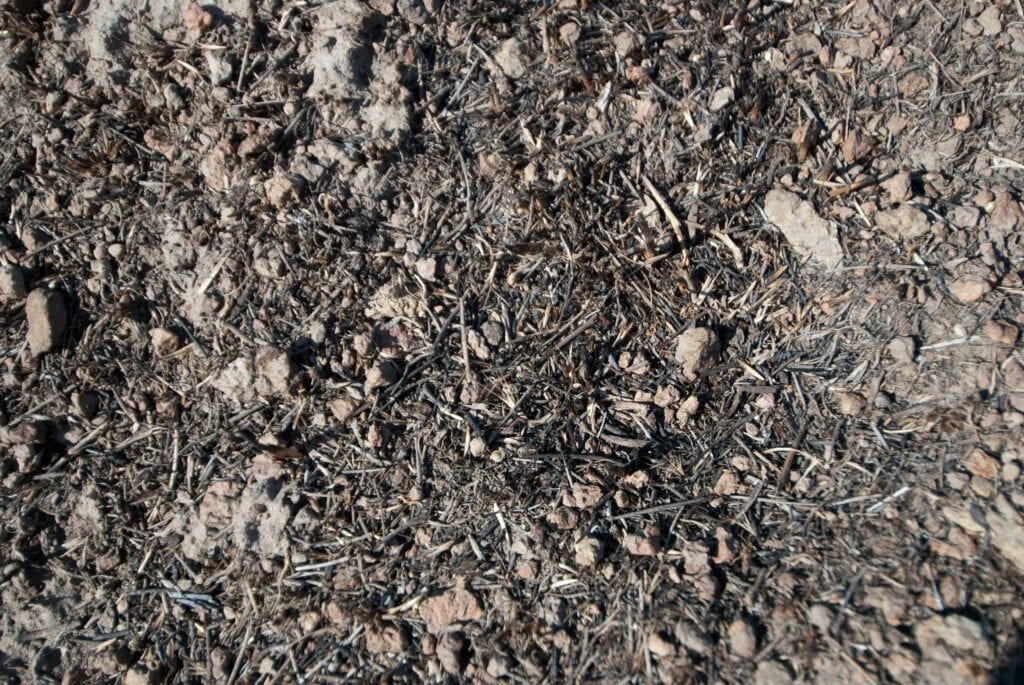Will cheatgrass dominate a site in the first growing season following fire where native perennial grasses are depleted?
Response of cheatgrass (Bromus tectorum) the first growing season on a depleted site following fire depends on seed source. Abundance of post-fire cheatgrass seed is directly related to:
- the amount of seed in the seed-pool prior to the fire
- the amount seed combusted by fire, which is largely related to the abundance and types of surface fuels, primarily shrubs (Miller et al. 2014).
Following fire on a cheatgrass-dominated site with few shrubs (photo below) the majority of cheatgrass seed would not be combusted. Fuels are very light resulting in limited combustion of surface litter and seed. If 15% or more shrub cover was present, much of the cheatgrass seed is usually combusted allowing a one-year window to seed the depleted site.


